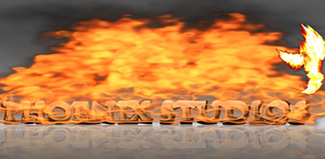The Foundry Nuke 8
|
|
|
Price
List price: 4155.00$
Price: 4155.00$
Usually ships in 24 hours

|
NUKE products are powerful, award-winning compositing tools that deliver unparalleled speed and first-class feature sets unrivalled in the desktop market. If you're in the business of creating high-quality film, animation, commercial or broadcast content, The Foundry's NUKE products, backed by a large, global pool of trained talent, will bring speed, functionality and flexibility to your pipeline.
System Requirements
Windows and Linux
-
Windows XP Professional x64 Edition, Windows 7 x64, or RHEL 5.4 for Intel64 or AMD64
-
x86-64 processor, such as Intel Pentium 4 or AMD Athlon, with SSE3 instruction set support (or newer)
-
5 GB disk space available for caching and temporary files
-
At least 1 GB RAM
-
Display with at least 1280 x 1024 pixel resolution and 24-bit color
-
Graphics card with at least 512 MB of video memory and driver support for OpenGL 2.0
To enable optional GPU acceleration of Viewer processing, you need OpenGL 2.0 with support for floating point textures and GLSL.
To enable NUKEX 7.0 to calculate certain nodes using the GPU, you need to have:
-
An NVIDIA GPU with compute capability 1.1 or above. A list of the compute capabilities of NVIDIA GPUs is available at: http://www.nvidia.co.uk/object/cuda_gpus_uk.html
-
Graphics drivers capable of running CUDA 4.0 or above. On Windows and Linux, these are the normal graphics drivers for your NVIDIA GPU: Windows 275.36 (released June 20111.19) or later, Linux 270.41.19 (released May 2011) or later.
To avoid graphical problems, such as text disappearing in the Viewer and Node Graph, it is important to keep your graphics card drivers up-to-date. Driver updates can be obtained from the web sites of the graphics card manufacturers (for example, www.nvidia.com and support.amd.com).
If you're using R3D Rocket graphics card, note that using it in Nuke will most likely only be considerably faster when you're reading in at full resolution. If you're reading in at half resolution for instance, using Nuke without the R3D Rocket card enabled may be faster. This is because the R3D Rocket graphics card is designed to be fast when reading in multiple frames at the same time. This is not how Nuke works internally, and therefore reads with the R3D Rocket card disabled will sometimes be faster when working in lower resolutions (< 4K widths). Note that the R3D Rocket card will always produce better results when downsampling than Nuke will.
Mac OS X
To avoid graphical problems, such as text disappearing in the Viewer and Node Graph, it is important to keep your graphics card drivers up-to-date. Driver updates can be obtained from the web sites of the graphics card manufacturers (for example, www.nvidia.com and support.amd.com).
If you're using R3D Rocket graphics card, note that using it in Nuke will most likely only be considerably faster when you're reading in at full resolution. If you're reading in at half resolution for instance, using Nuke without the R3D Rocket card enabled may be faster. This is because the R3D Rocket graphics card is designed to be fast when reading in multiple frames at the same time. This is not how Nuke works internally, and therefore reads with the R3D Rocket card disabled will sometimes be faster when working in lower resolutions (< 4K widths). Note that the R3D Rocket card will always produce better results when downsampling than Nuke will.
|
|



|
|